Bintan is often framed as just a resort island. For many travellers, it’s a place of ease. I mean, beachfront villas, spa afternoons, and ferry rides that feel like an escape from routine? Of course that sounds like a dreamy escape from a hustling life in the city, but this version of Bintan admittedly leaves a lot out.
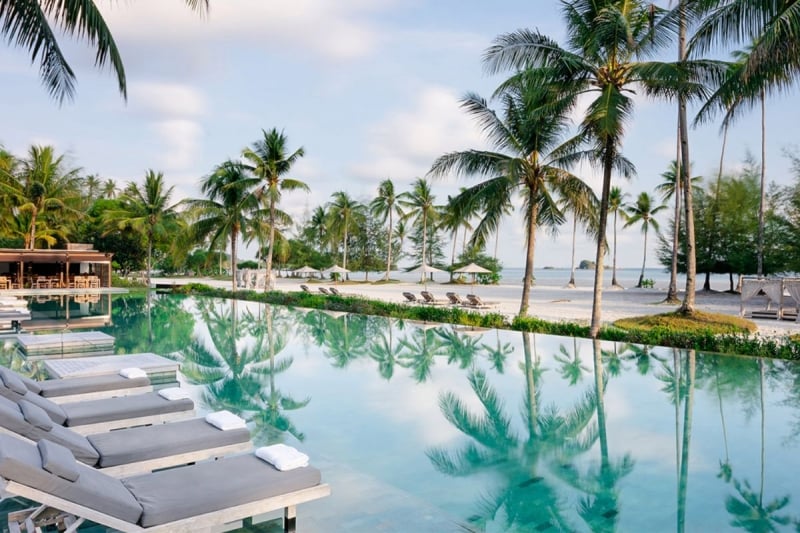
Image Credit: The Sanchaya Bintan Official Website
The island is also a site of work, migration, and memory. The tourism industry has brought change, but not without cost. Local economies have adapted, sometimes unevenly. Meanwhile, markets and small producers continue to shape what Bintan is, often in ways that fall outside of travel brochures.
Paying attention to what you bring back (what you choose to buy, eat, or carry home) can be one way to notice more. A snack is never just a snack, and a craft item always has a context. These objects don’t offer an entire truth, but they open a small window into the lives behind them.
So yes, this is still a guide to the best snacks and souvenirs to buy in Bintan. But it’s also an invitation to see the island a little differently — through the textures, tastes, and traces that make it what it is.
Traditional woodcrafts
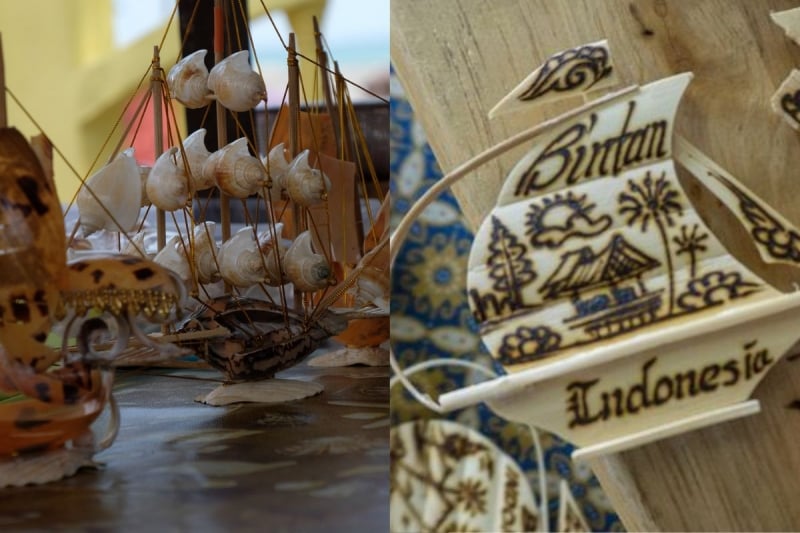
Image Credit: Indonesia Travel Official Website
In the markets of Bintan, it’s not unusual to come across stalls lined with carved bowls, wooden masks, and delicate miniatures of phinisi boats. At first glance, these might seem like standard tourist items. But look a little closer, and you’ll notice the variation in grain, the uneven brush of lacquer, the signs that each piece was shaped by hand.
Bintan’s woodcraft tradition draws from the forests of the Riau Islands, where woods like balau, kamper, and shorea are commonly used. These aren’t just material. Rather, they’re part of local economies, family-run workshops, and inherited know-how. The styles often reflect a mix of Malay and coastal influences, sometimes with symbolic motifs or everyday utilitarian shapes.
Many of these objects are designed to be useful (a bowl, a keyholder, a frame) and yet they also carry something of the island’s past and present. They’re quiet things, made to be touched, held, and used.
Where to get it
Markets like Pasar Oleh Oleh or small roadside shops, especially near Tanjung Pinang. Some resorts also collaborate with artisan vendors, so don’t be shy to ask around.
Kerang Bulu
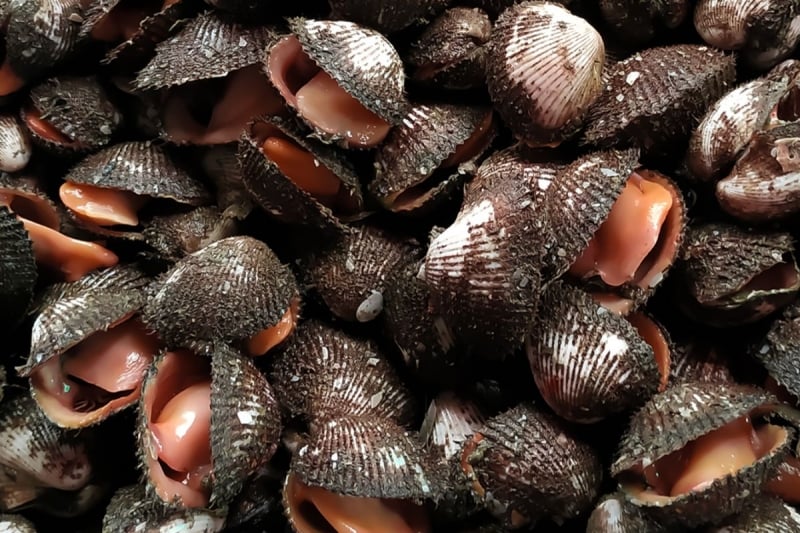
Image Credit: Indonesia Travel Official Website
For many families in Bintan, the sea isn’t just a pretty view, but a livelihood. One of the lesser-known treasures gathered from these waters is kerang bulu, a type of hairy scallop that locals cook into sambal-rich stir-fries or eat freshly steamed with lime and chilli.
Unlike tourist-facing seafood platters, kerang bulu is often found at roadside warungs or wet markets, sold by weight in repurposed plastic tubs. There’s a kind of quiet, everyday economy here — one that doesn’t always show up in resort itineraries, but shapes the island behind the scenes.
Bringing it home fresh isn’t the most practical move for most visitors. But tasting it, even once, can shift how you think about what the sea gives — and who it gives to.
Where to get it:
Look for local seafood stalls along coastal roads or visit the wet markets in Tanjung Pinang. If you spot it on a menu, say yes.
Tepung Gomak
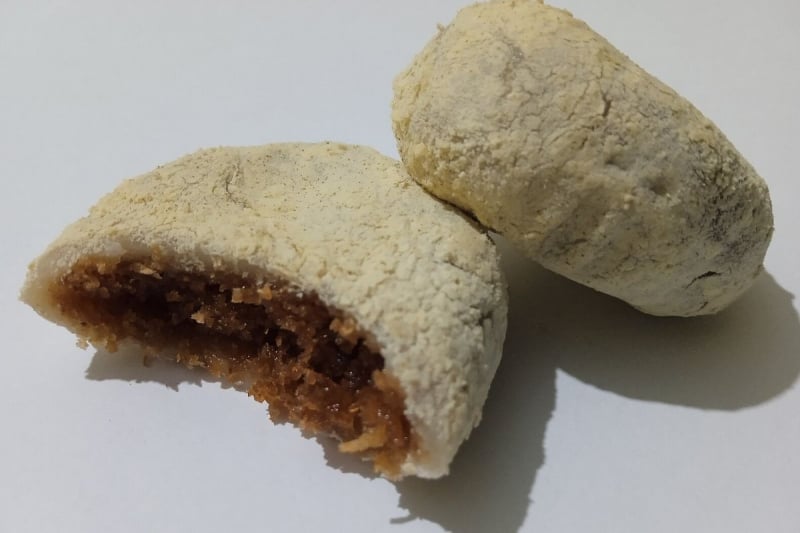
Image Credit: Wiki Farazi via Wikimedia Commons
Tepung Gomak doesn’t draw attention to itself. It’s not flashy or photogenic. Just a small, round snack that’s pale on the outside gently sweet on the inside, and it sits in neat rows on trays across Bintan’s markets. But like many traditional sweets, it carries more than it shows.
Made from glutinous rice flour and filled with a soft mix of coconut flakes and palm sugar, Tepung Gomak is part of a long lineage of Malay kuih. The name “gomak” loosely suggests the action of rolling or coating, which is how each piece gets its powdery outer layer, typically from roasted flour or ground soy.
It’s the kind of snack made for slow moments, either eaten with tea, shared among neighbours, or brought home in plastic boxes, each one slightly smudged from the journey.
Where to get it:
Traditional markets and roadside snack stalls, especially in the mornings. It’s best eaten within a few days.
Roti Kirai
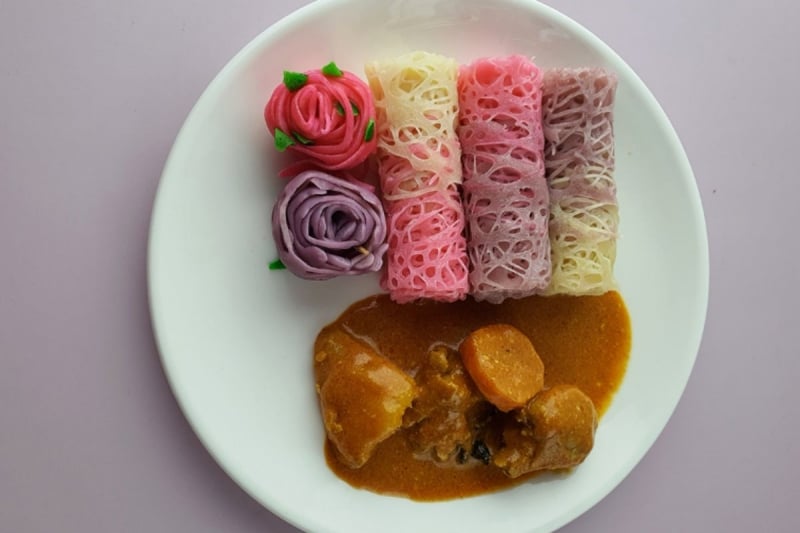
Image Credit: Indonesia Travel Official Website
Roti Kirai is one of those foods that looks like a net, eats like a crepe, and lives in the blurry space between meal and memory. Often served with a ladleful of chicken curry, it’s a dish that belongs to the wider world of Malay cooking (the kind that stretches across coastlines, ferry routes, and family tables).
In Bintan, you’ll find it in casual eateries, folded into warm stacks beside bowls of thick, spiced gravy. Some versions are tinted green with pandan; others come plain and golden. There are sweet versions too, usually paired with coconut milk or palm sugar syrup.
The name “kirai” comes from the Malay word for spinning, referencing how the batter is traditionally poured in quick, looping motions to create its signature lacy texture. Watching it being made is half the joy. Eating it, even more so.
Where to get it:
Ask for it at traditional warungs or Malay-style eateries near Tanjung Pinang. It’s best eaten fresh, but some stalls offer pre-packed options for takeaway.
Kerupuk Gonggong
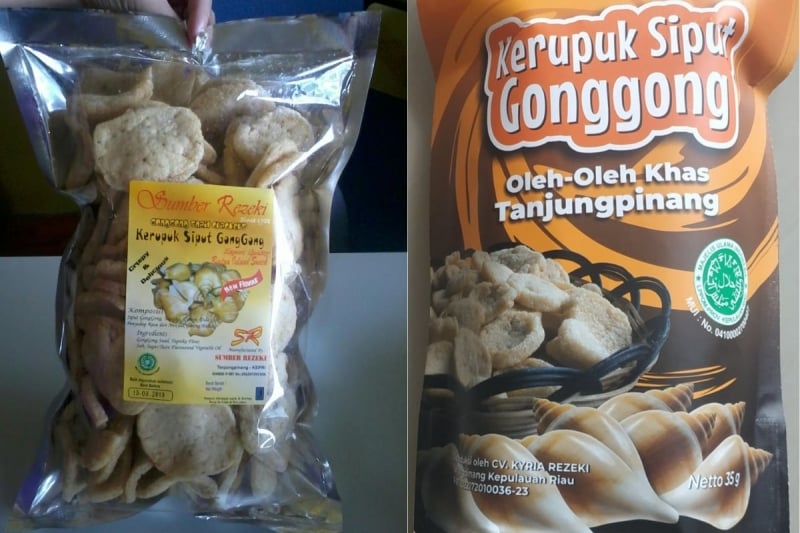
Image Credit: Kerupuk Siput Gong Gong Tanjungpinang Official Facebook Page
If prawn crackers are the snack everyone expects, kerupuk gonggong is the one they remember. Made from a local sea snail known simply as gonggong, these crackers are a coastal invention. They’re thin, crisp, and carrying the soft brininess of the sea.
Gonggong itself is a regional delicacy in Bintan, often boiled and dipped in fiery sauces. Turning it into crackers is both practical and ingenious way to preserve and share something local, without needing a dinner table or a fridge.
The production process is often informal, passed down in families or small home industries. What you get is rarely uniform. Some are lighter, some more savoury, and each batch carries a bit of the maker’s hand. It’s one of the many ways Bintan’s seafood story travels inland, and eventually, across borders.
Where to get it:
Souvenir markets like Pasar Oleh Oleh or snack stalls near ferry terminals. Look for clear bags tied with string or stapled shut. The more homemade, the better.
Batik Gonggong
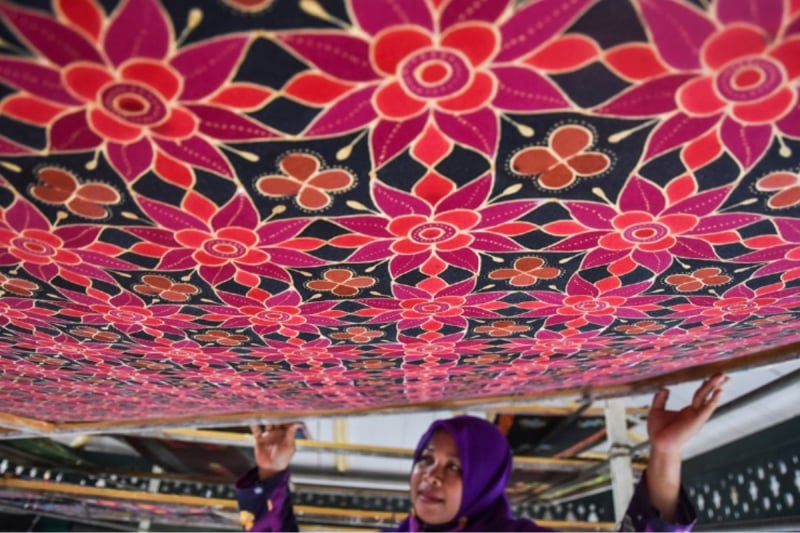
Image Credit: Indonesia Travel Official Website
Batik Gonggong is Bintan’s own take on a centuries-old textile tradition, and like most things on the island, it’s quietly shaped by the sea. Named after the same gonggong snail, this batik often features flowing motifs that echo waves, shells, and soft marine forms.
Unlike the bold florals of Javanese batik or the earthy tones of Sumatran styles, Bintan’s batik tends to be lighter, more coastal in both palette and rhythm. There’s a softness to it in the lines, the colours and the way it sits in your hands.
Most pieces are hand-stamped or hand-dyed, made by artisans working in small studios or community-run workshops. It’s the kind of souvenir that doesn’t shout for attention, but holds meaning over time whether it’s worn, wrapped, or hung on a wall.
Where to get it:
Look for local batik shops near Tanjung Pinang or ask around at Pasar Oleh Oleh. Some pieces are ready-to-wear, others come as fabric lengths. Either way, they’re a quiet testament to the island’s patterns of life.
Hawaii Coffee
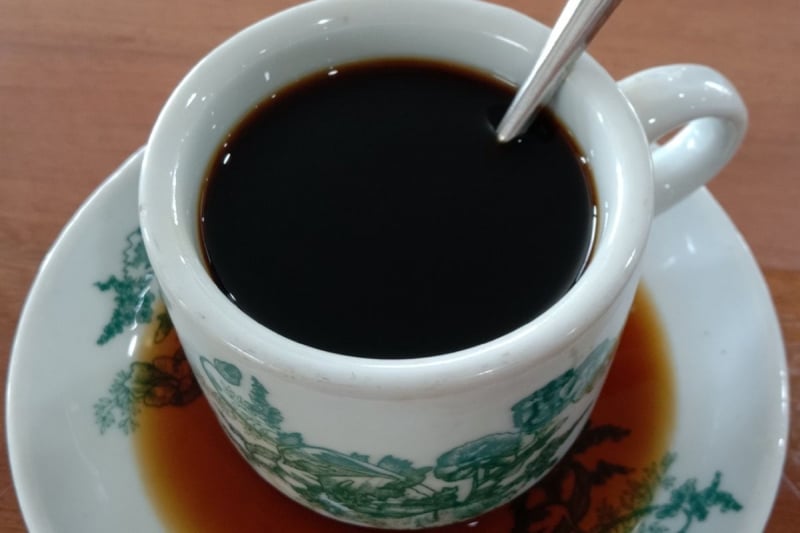
Image Credit: Indonesia Travel Official Website
Despite what it suggests, Hawaii Coffee has nothing to do with the Pacific islands. You won’t find hula girls or tropical branding here. Just a rich, earthy brew beloved by Bintan locals. The name itself is a bit of a mystery. Some say it’s a holdover from older trade links or a quirk of branding that stuck. Others don’t ask; they just drink.
The coffee is often dark-roasted, full-bodied, and served with condensed milk. It’s the kind of cup that wakes you up slowly instead of all at once, making it ideal for quiet mornings in unfamiliar places.
If you pick up a pack to take home, don’t expect single-origin branding or neat storybook packaging. It’s often sold loose or in unmarked bags, scooped and sealed with practiced hands. But the aroma, once brewed, speaks for itself.
Where to get it:
Local provision shops, small coffee stalls, or wet markets. Don’t be shy to ask vendors directly. It’s a name they’ll likely recognise even if it’s not on the shelf.
Final thoughts
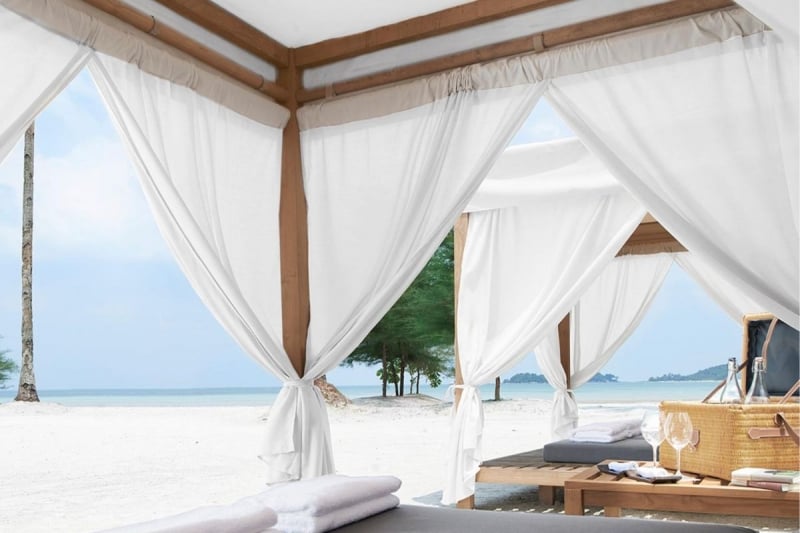
Image Credit: The Sanchaya Bintan Official Website
It’s easy to leave Bintan with a camera roll of sunsets and spa views — and there’s nothing wrong with that. After all, we go on holidays to rest and recharge. But if you leave with a packet of crackers, a piece of batik, or the lingering taste of curry-soaked roti kirai, maybe you’re also carrying something else: a small reminder that the island is lived-in, made, and remade, rather just visited.
Souvenirs and snacks won’t tell you everything. But they can ground you. They can remind you that every place is more than what it sells, and every object has a story, even if it’s quiet.




